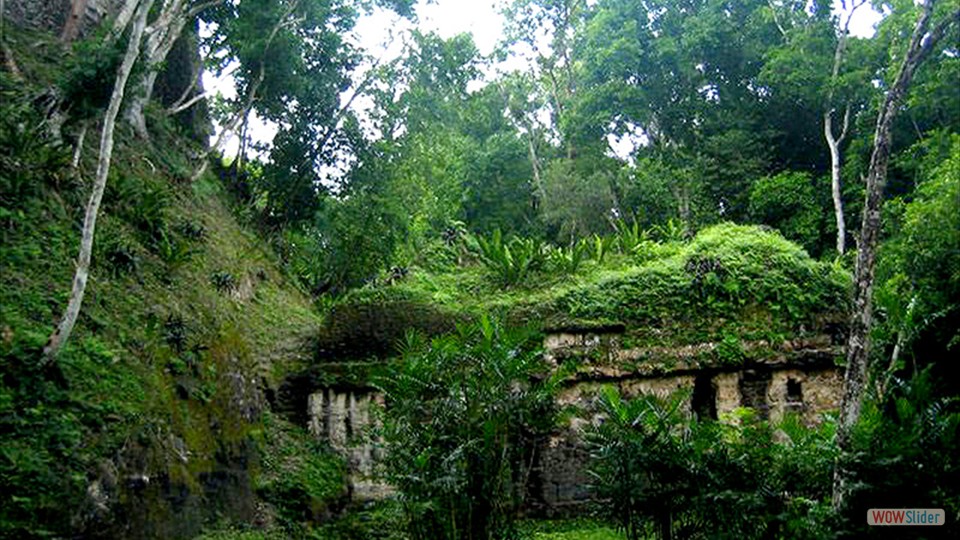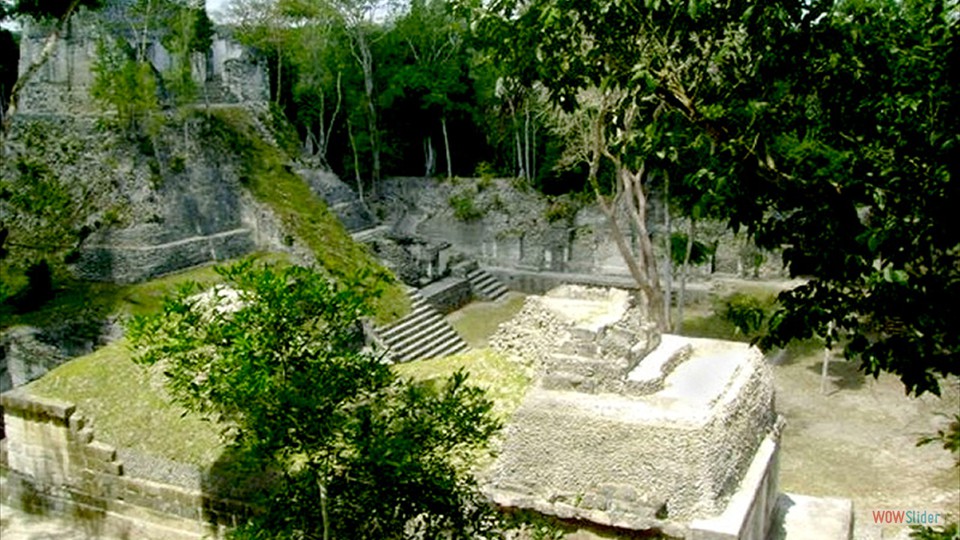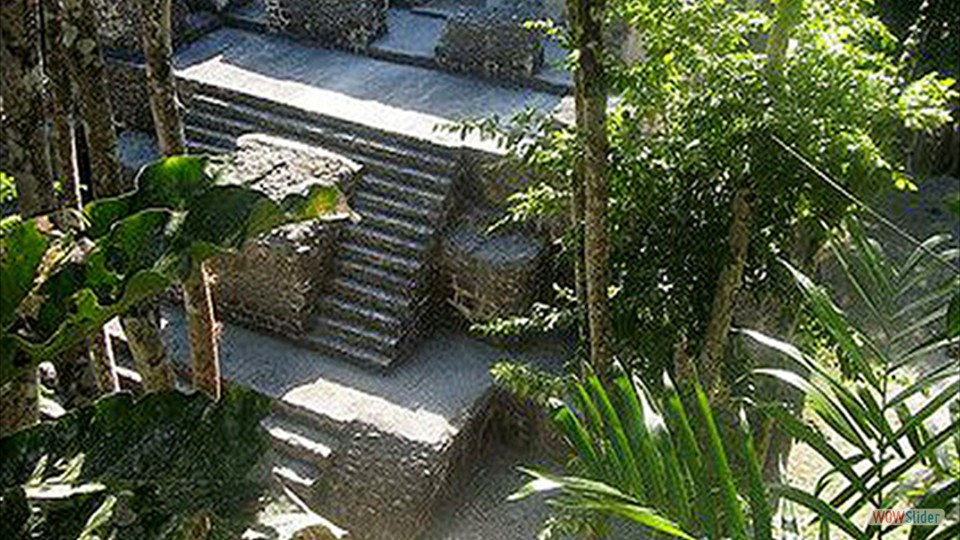Nakum means "house of the pot" It was first settled during the Middle Preclassic. This period saw the construction of the first versions of several important complexes and buildings. The site saw significant development during the Late Preclassic when all existing structures were rebuilt and new constructions were added. During the Early Classic architectural activity clearly diminishes at Nakum. Only four buildings dated to that period have been discovered so far and they are located in the Acropolis complex. Many structures visible at Nakum today were constructed in the Late Classic period. However, one of the most interesting and intriguing facts in the occupational history of Nakum is its vigorous development during the Terminal Classic period when most of the other Southern Lowland Mayan centers were in decline. Archaeological investigations undertaken during the past several years in the South Sectors demonstrate quite convincingly that all the structures erected in the previous period were rebuilt during the Terminal Classic. Moreover, many new structures were constructed during this period. The core of Nakum is divided into two main sectors: North and South. The North Sector houses a large spacious plaza and several large complexes and buildings (North, West and East Groups as well as Temple X). The North and South Sectors of the site are connected by the elevated Perigny (Its first investigator in 1907) Causeway which is about 250 m long. A small ballcourt (Structures 7 and 8) is located at the southern end of the causeway. The South Sector houses several huge temple-pyramid structures (Structures A, B, C, V, U) as well as an enormous complex called the Acropolis and many other buildings. The Acropolis consists of a large architectural platform topped by palace-like structures grouped around 12 courtyards or patio groups. The South Sector of Nakum which houses the most important and impressive pyramid-temples and palace structures was extensively rebuilt and enlarged during the Terminal Classic period. The Roofcomb of the main temple is the best preserved outside Tikal, the south plaza is the largest, including the main Acrpolis with 11 patios, alot of structures, including a 44 room palace, and in the center another elevated acrpolis, this city has evidence of being occupied since late Preclassic, but flourished in the Late Classic, from 700 to 950 C.E. due to its strategic situation north of Holmul river, that was an important commerce pathway during this era. All the visible architecture belongs to this period, there are 15 stelas, Structure A with a triadic top, form along with structure C an astronomical complex. Structure V has vaults and vertical walls. In a Temple Pyramid (st 15), a royal burial was siacovered and had the remains of a couple, the Jade pectoral bears the name of Ixim Chan lord of Yaxh, dated some 4 centuries earlier than the tomb, perhaps it was a war trophy or a direct descendant.

Copyright: © 1999 thru 2021. All the content; content being images, statements and writing of this website including E-Book are the copyright of Freedom8.net and Walter F. Petrucci, West Hurley, New York.
All rights expressly reserved and as such, protected by U.S. and International Copyright Laws. Design by freedom8 webmaster Version8.





 1
1 2
2 3
3 4
4 5
5